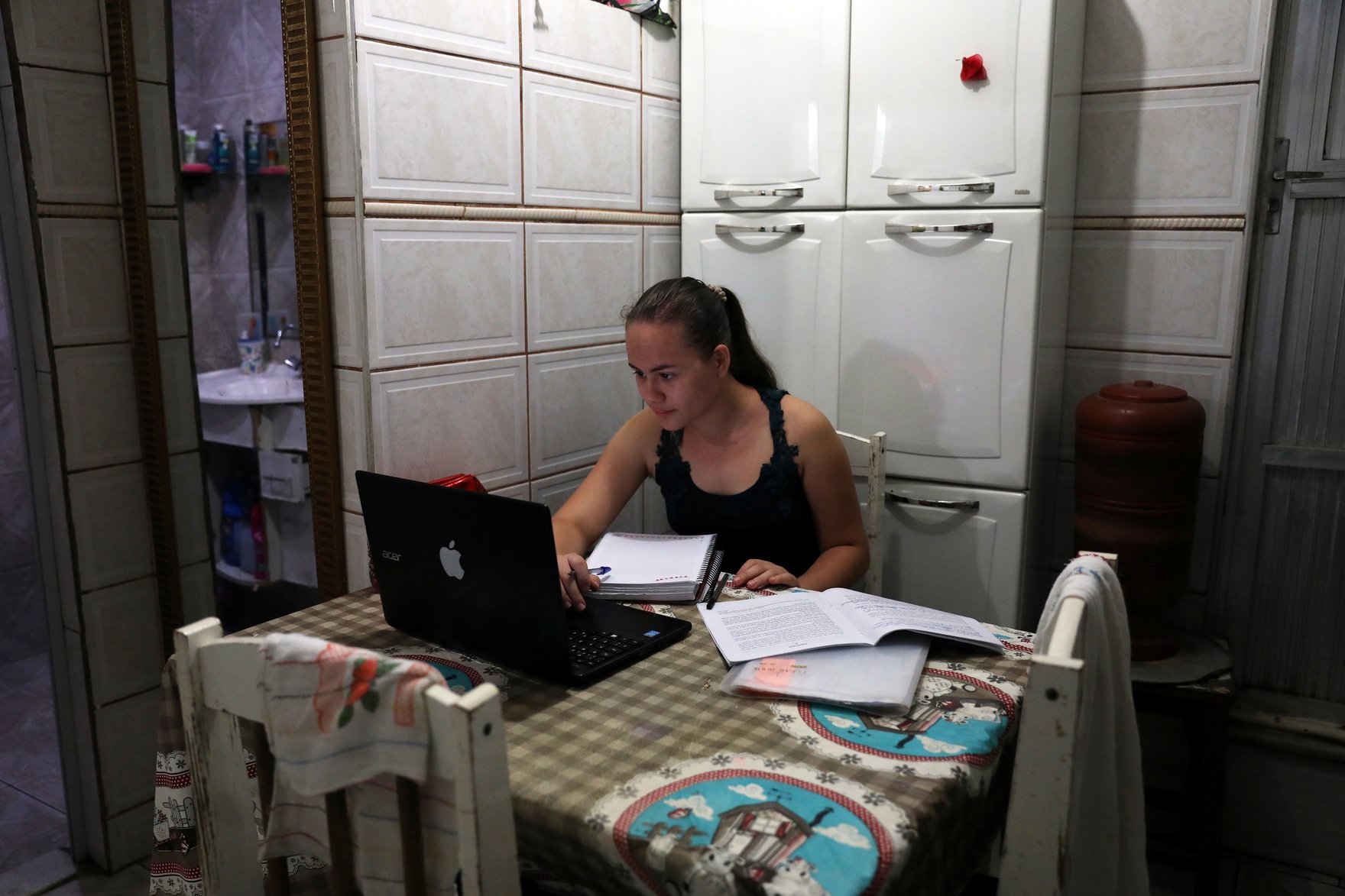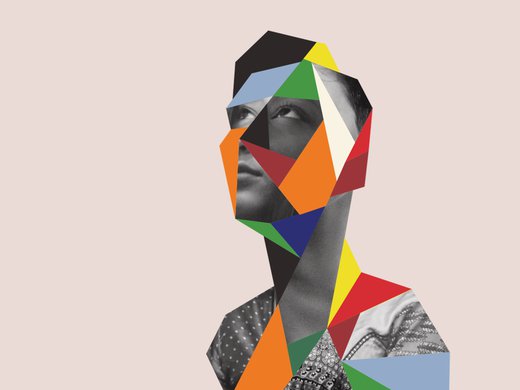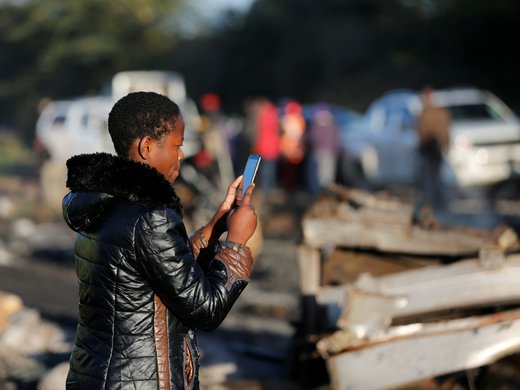Increasingly, feminist activists and groups are using technologies and digital spaces to organize, get informed, demand rights and report abuses. Notable cases in Argentina, El Salvador, Brazil, Chile and elsewhere illustrate just how useful digital spaces are for occupation and demonstration; also remarkable are the many disruptive ways in which feminist and women movements are taking back the internet in order to accomplish social and political change.
In Latin America, feminists have adopted digital strategies to push back against regulations, protect themselves from attacks, report abuses and mobilize others. But to understand the internet’s ability to facilitate these strategies, we must first discuss the structural constraints that women and, increasingly, feminist groups face online.
Gender-based violence — including modern forms that use digital technologies to cause harms — greatly impact the experience of Latin American women in digital spaces and their ability to express themselves online as local human rights organizations have consistently reported. Attacks affecting women’s internet use range from discriminatory discourses and harassment to extortion and identity theft. These attacks disproportionally affect LGBTQ+ people and other groups that are not in line with sexist, racist or heteronormative stereotypes. The risk of suffering violence in digital spaces creates an online world that is not safe for many women, who may as a result see themselves forced into practices of self-censorship.
Attacks affecting women’s internet use range from discriminatory discourses and harassment to extortion and identity theft.
While online gender-based violence impacts women of all social and political backgrounds, organized attacks are becoming more common against feminist groups, female activists and opinion makers. Political leaders representing conservative, patriarchal and heteronormative ideas have contributed to an increase in targeted attacks in several countries in the past years. This was particularly evident at the onset of the COVID-19 pandemic, when most activities — including those related to the defense of fundamental rights — moved online.
In Brazil, harassment and threats against female journalists or public figures were often led or supported by national authorities, including President Jair Bolsonaro. For example, Patricia Campos Mello, a journalist who led investigative stories on Bolsonaro and his supporters, was accused of offering sexual favours in exchange for information. Mello was harassed and threatened online, and although the accusations were quickly proven false, they continued to move through politicians’ social media and public discourses, including Bolsonaro and members of his family.
Online violence against women journalists is not a problem exclusive to Brazil. According to a study developed by the International Center for Journalists and the United Nations Educational, Scientific and Cultural Organization, 73 percent of women journalists say that they have experienced online abuse, harassment, threats and attacks. As a consequence, many are removing themselves from public online conversations and, in some cases, even quitting their jobs.
In Chile, women in the public sphere who shared information about the COVID-19 pandemic were targeted with discredit campaigns and direct attacks. The president of Chile’s medical association, Izkia Siches, who emerged as a leader during the health crisis, is a particularly strong example. After she called for stricter measures to contain the COVID-19 virus, she was sent dozens of emails that threatened her and her family with sexual violence and death. Her Instagram account was deactivated for hours after the platform received numerous reports that she was dead. Similarly, Congresswoman Carmen Hertz, a recognized human rights lawyer who was criticizing the official response to the pandemic, received a barrage of torture and death threats through social networks and her personal phone number. Messages included images of armed men, human bodies being thrown out of helicopters, animal torture, and references to the torture and assassination of her husband during the Chilean dictatorship.
In El Salvador, civil society organizations reported an increasingly violent and hostile digital environment that hinders the work of women human rights defenders during the health emergency. President Nayib Bukele and high-ranking government officials have used social media and misogynist language to delegitimize criticism and discredit human rights organizations. Women journalists were also targets, especially when involved in investigations of the government or expressing disagreements with its management of the crisis. Yaneth Estrada, for example, experienced repeated digital harassment when her social media accounts were hacked.
Misogynist, racist and homophobic attacks during virtual conferences — so-called Zoom-bombings — also became common in Latin America during the health crisis. Attacks usually involve showing aggressive sexual or violent content and give a clear message to participants: you are not safe here. During the municipal elections in Brazil, Zoom-bombings affected events promoted by women candidates or debates regarding women’s political participation. An academic who specialized in gender and politics reported facing a “bombing” at least once a month. Feminist organizations working remotely had to develop new strategies to protect their meetings so that they could continue their activities during the pandemic.
Building a Feminist Internet
Dealing with the COVID-19 virus and addressing the global socio-economic crisis demand the adoption of an intersectional perspective, as not all are exposed to risks in the same way. These differences are true for both physical and digital spaces.
Some of these issues have been recognized by the Feminist Principles of the Internet project, which began in 2015 and involves 500 organizations seeking to create new ways of looking at and living in the digital space. This feminist socio-political platform understands that, amid an increasingly violent and misogynist online environment, we must work toward an internet that is built from an intersectional perspective. Their take is that the internet is a territory to be reclaimed as a space that feminist, women and LGBTQ+ groups can occupy creatively, in solidarity and from an intersectional point of view. The way women and feminist movements inhabit the internet, the spaces chosen to create community, the devices offered by monopolistic and extractive companies, the digital care measures embedded in every political action, and the way to secure access to the information are all topics of relevance in the creation of a feminist internet.
Access, economics, expression, sexuality, social movements, digital care and aspects of social surveillance facilitated by technologies are important parts of the discussion. And, as the pandemic and authoritarian governments were further exposing women to new forms of hate, Latin American feminist and women’s movements applied an intersectional perspective to develop several strategies in response.
From Brazil, the trans-hack-feminist space MariaLab launched two very specific manuals addressing the increase of domestic violence due to technology-facilitated gender-based violence and focusing on detailed measures that women and LGBTQ+ groups could adopt to mitigate the vulnerability of their devices. The Argentinean journalist media and feminist think tank Latfem launched its first digital-aid tool kit for feminist journalists in Latin America and the Caribbean. Colectiva Mecha — an organization operating in Mexico and Chile — shared information on safer sexting as dating and sexual interaction shifted online.
Taller de Comunicación Mujer has developed an extensive and useful report about online gender-based violence in Ecuador and a very important guide focused on digital security for the migrant caravans moving through the Latin American region.
From Central America and Mexico, the IM-Defensoras network and the “Take Back the Tech” campaign have also provided guides and hotlines as a response to confront the constant attacks and harassment that target the Latin American and Caribbean movements on the internet.
But the Argentinian case of the Campaña Nacional por el Derecho al Aborto Legal Seguro y Gratuito (National Campaign for the Right to Free and Safe Legal Abortion) depicts an exceptional example of a feminist activist mobilization during the pandemic. After an earlier rejection of the bill that would legalize abortion in 2018, multiple online actions for its approval did not stop despite the strict lockdown measures put in place during the pandemic. Viral memes and uses of provocative pro-abortion imagery proved to be disruptive and effective enough to gather a significant number of supporters. They have demonstrated the effectiveness of feminist technopolitical strategies in connecting the online and offline world and pushed for both the relaunch of the debate and approval of the bill.
The Challenges Ahead
As online authoritarianism and violence arises in the region, understanding structural elements affecting the functioning of the internet itself is key to building a safe and feminist digital space in which women and LGBTQ+ people can express themselves, claim for rights and contribute to building more just societies.
No matter how active companies such as Twitter, Facebook, Google, Apple, Samsung and Amazon may appear to be in the fight for women’s rights, they will never be feminist allies. As the Lebanese activist Nadine Moawad states: “They are in the business of exploiting feminism and we are in the struggle of ending capitalism. We do not turn to them for solutions. If their primary interest is harvesting more personal data to create new surveillance capitalism and fuel their Artificial Intelligence bots with better knowledge of markets, then we are in complete opposite motivations.”
In fact, women and LGBTQ+ groups have also been especially adversely affected by the application of social network platforms’ rules in Latin America. Content policies and terms of service have had a differential impact on their privacy, autonomy, freedom of expression, social, economic and reproductive rights. Here, we can’t calculate the full scope of the issue; platforms don’t offer gender disaggregated information on content moderation or takedowns. That said, many users report issues with policies about the use of real names or the removal of photos of women’s bodies (which often have political, historical or artistic significance).
No matter how active companies such as Twitter, Facebook, Google, Apple, Samsung and Amazon may appear to be in the fight for women’s rights, they will never be feminist allies.
Further, the ambiguity of platform rules leaves room for the promotion of hate speech and online violence. This is reflected in platforms’ delays and excuses in removing violent content and reluctance to take action against other forms of gender-based violence and transphobia as pointed out by several human rights organizations.
For all these reasons, women and LGBTQ+ groups have adopted strategies to protect themselves online, to shed light on social networks’ flawed policies and request accountability. But these are only the first steps toward a safer internet. There is a long way to go and it involves deeply understanding the vulnerabilities and risks women face in the era of digital surveillance.
As Marcela A. Fuentes highlights in her book Performance Constellations: Networks of Protest and Activism in Latin America, “The remote does not take away the synchronic and this does not take away the vital. The memories of assemblies, protests, embraces in our bodies resist abandoning our being on the screens. Today, more than ever, as has been said, we must citizenize the use of networks.” Only in this way we will be able to work toward a more feminist internet.




